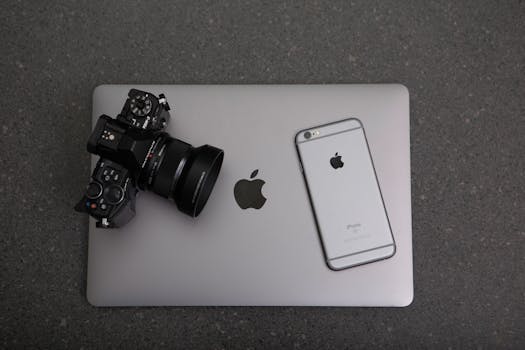
The Future of Connectivity: Exploring Smartphones, Tablets, and Wearables
Takeaways: In this article, we delve into the evolution of smartphones, tablets, and wearables. Discover how these devices have transformed our daily lives and the future trends that will shape our digital experiences. We also discuss the impact of these technologies on connectivity, productivity, and health monitoring.
As technology continues to evolve, the landscape of personal devices has transformed dramatically. Smartphones, tablets, and wearables are no longer just gadgets; they are essential tools that enhance our connectivity, productivity, and overall lifestyle. In this blog post, we will explore the significance of these devices, their evolution, and what the future holds for them.
Smartphones: The All-in-One Device

The evolution of smartphones began in the early 2000s with devices like the BlackBerry and Palm Treo. However, it was the launch of the iPhone in 2007 that truly changed the game. The introduction of touch screens, app stores, and user-friendly interfaces set a new standard for mobile devices. Today, smartphones are equipped with advanced features such as artificial intelligence, augmented reality, and 5G connectivity.
Smartphones have also become gateways to a multitude of services and applications. From managing our finances to controlling smart home devices, smartphones enable us to interact with the digital world seamlessly. Social media platforms, messaging apps, and video conferencing tools have made it easier than ever to stay connected with friends, family, and colleagues regardless of geographical boundaries.
Moreover, smartphones are increasingly being used for health monitoring. With built-in sensors and third-party applications, users can track their fitness, heart rate, and even sleep patterns, promoting a healthier lifestyle.
Tablets: Bridging the Gap Between Smartphones and Laptops

Today’s tablets come in various forms, from basic models for casual use to high-performance devices that can replace laptops for many users. Features such as detachable keyboards, stylus support, and powerful processors make tablets suitable for a wide range of tasks, from note-taking and drawing to video editing and gaming.
One of the key advantages of tablets is their ability to enhance productivity. With the right apps, users can manage projects, collaborate with teams, and access cloud services on the go. Educational institutions also leverage tablets for interactive learning, providing students with a dynamic and engaging environment.
Tablets are particularly beneficial for media consumption. Whether it’s streaming the latest shows, reading eBooks, or browsing the web, tablets offer a user-friendly experience that is often more enjoyable than smaller smartphone screens.
Wearables: The Next Frontier of Personal Technology

Smartwatches, like the Apple Watch and various Android devices, not only tell time but also offer notifications, health tracking, and even mobile payment options. These features make them invaluable for those who want to stay organized and informed without constantly checking their phones.
Fitness trackers have also evolved significantly, providing users with insights into their physical activity, sleep quality, and heart rate. This data empowers individuals to make informed decisions about their health and fitness goals.
Looking ahead, the integration of wearables with other smart technologies is expected to grow. From health monitoring to seamless connectivity with smart home devices, wearables are set to play a crucial role in the future of personal technology.
Conclusion







